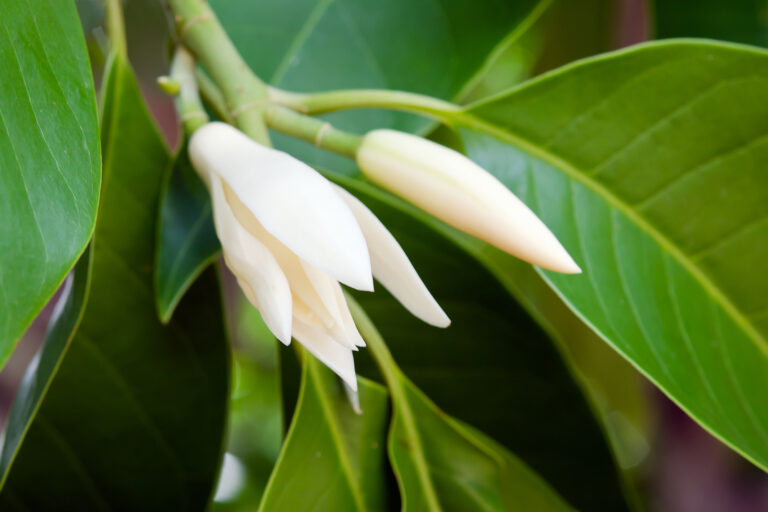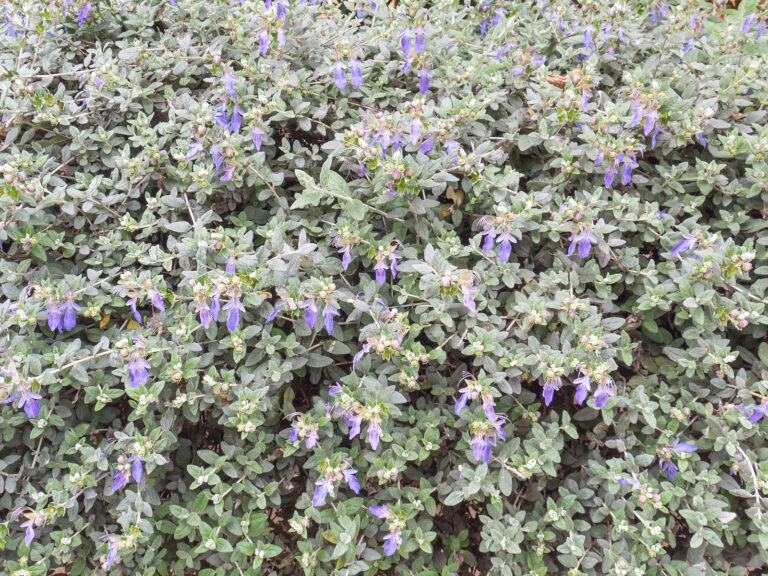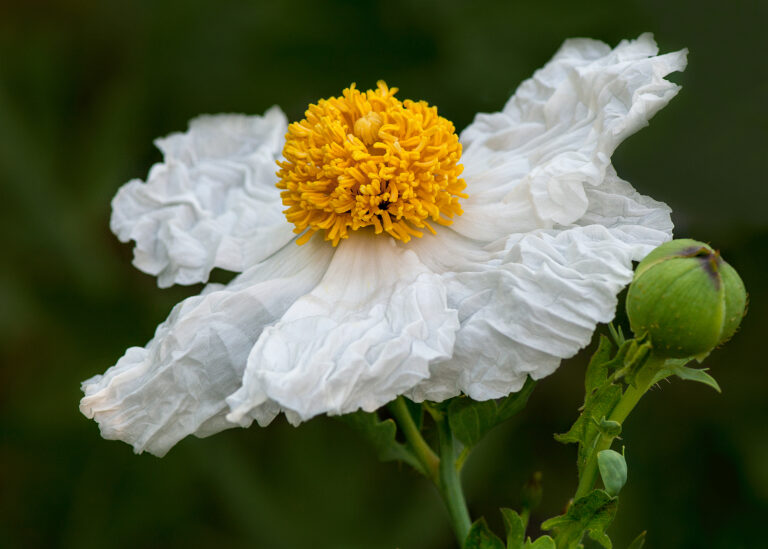How to Grow Pyracantha
Pyracantha is an upright, sprawling shrub usually grown for its glossy, deep green foliage and bright fruit. Pyracantha can be trained as an espalier screen or allowed to sprawl across the soil as a groundcover.
Pyracantha is commonly called firethorn,
Pyracantha is a fast, vigorous grower. It can reach mature height in only five to eight years. Pyracantha varieties range in height from 2 to 3 feet (.6-.9m) to 15 to 20 feet (4.5-6m) tall.
The oval or rounded leaves grow ½ to 1 inch wide and 1 to 4 inches (2.5-10cm) long. Branches can grow long and semi-rigid. Needlelike thorns are interspersed along the branches between leaves.
Pyracanthas bear flowers and fruit on spurs along wood of last year’s growth. Spring flowers are small, fragrant, and dull creamy white; they are carried in flattish clusters. Flower clusters are followed by thick clusters of pea-size orange-red berries. Berries stay on the branches for months—often through the winter.
Pyracantha berries attract birds to the garden. Pruning pyracanthas will reduce the number of flowers and berries.

Get to know Pyracantha
- Plant type: Evergreen shrub; may be semi-evergreen in cold climates
- Growing zones and range: Zones 6 to 9; zones vary by species
- Hardiness: Hardy
- Height and width: 6 to 15 feet (1.8-4.5m) tall and wide
- Form: Stiff, sprawling branches; stems are thorny; evergreen foliage is attractive throughout the year
- Flowers: Foamy white flowers
- Bloom time: Spring flowers followed by berries in late summer, fall, and winter
- Uses: Hedges, barriers, espalier, slopes, massing as specimen plants, seasonal accents, attracting birds
- Common name: Firethorn
- Botanical name: Pyracantha
- Botanical family: Rosaceae
- Origin: Southern Europe to Southwestern Asia
Where to plant Pyracantha
- Plant pyracantha in full sun for best fruiting; pyracantha tolerates light shade.
- Pyracantha will grow in average well-drained garden soil but prefers deep, humus-rich soil. Pyracantha will grow in acidic and in dry, alkaline soil.
- Pyracantha prefers a neutral to somewhat acid soil pH, 5.5 to 6.5.
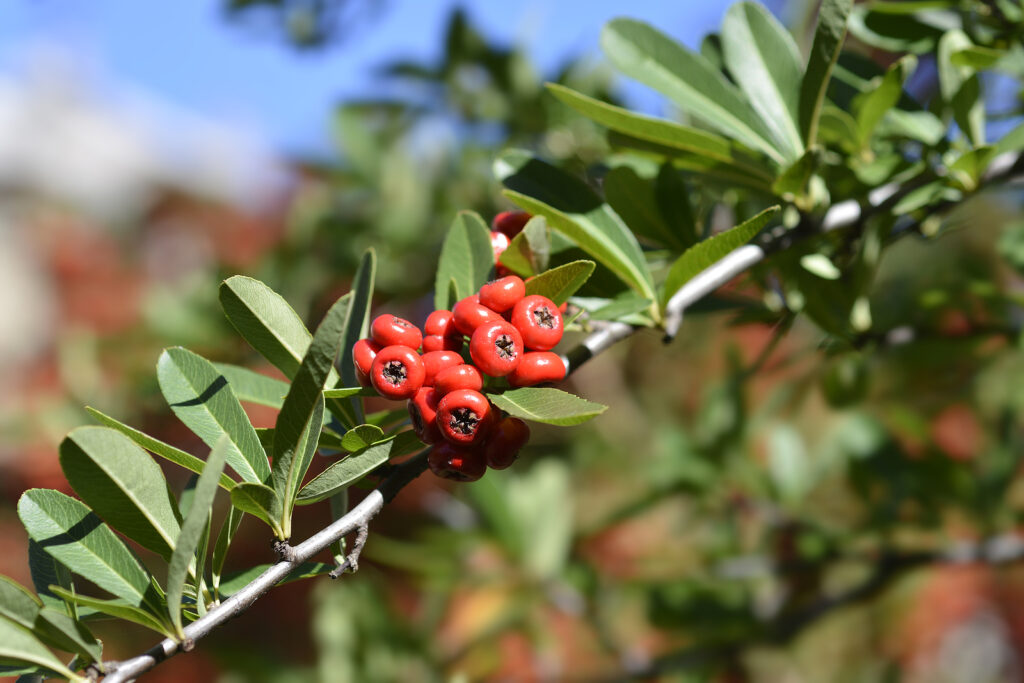
When to plant Pyracantha
- Set container-grown pyracantha in the garden in spring or fall.
- Pyracantha is difficult to transplant balled and burlapped except in early summer.
- Seeds can be started indoors in late winter or early spring. Transplant seedlings to the garden when they are well-rooted. A good strategy is to grow seedlings in containers for a year before setting them in the garden.
Planting and spacing Pyracantha
- Space pyracantha 10 to 15 feet (3-4.5m) apart.
- Set container grow plants in the garden in spring or fall.

How to water and feed Pyracantha
- Water pyracantha regularly until it is established; once established, pyracantha can thrive in nearly dry soil.
- Fertilize pyracantha lightly in spring with an all-purpose fertilizer; be careful not to overfertilize. Over-fertilizing can promote succulent growth that is susceptible to fireblight.
Pyracantha care
- Mulch around pyracantha to conserve soil moisture.
- Dislodge old withered or rotted berries with a water jet or broom.
- Prune pyracantha only occasionally to check wayward branches. Cut out old, straggly shoots selectively after flowering. Any cuts made should be taken back to the center of the shrub to hide the wounds.
- Pyracantha can be pruned or sheared to form a hedge, but pruning and shearing will reduce the number of berries.
- To encourage branching, clip off the tips of long stems during the growing season.
- Leaves can be damaged by cold winter temperatures.
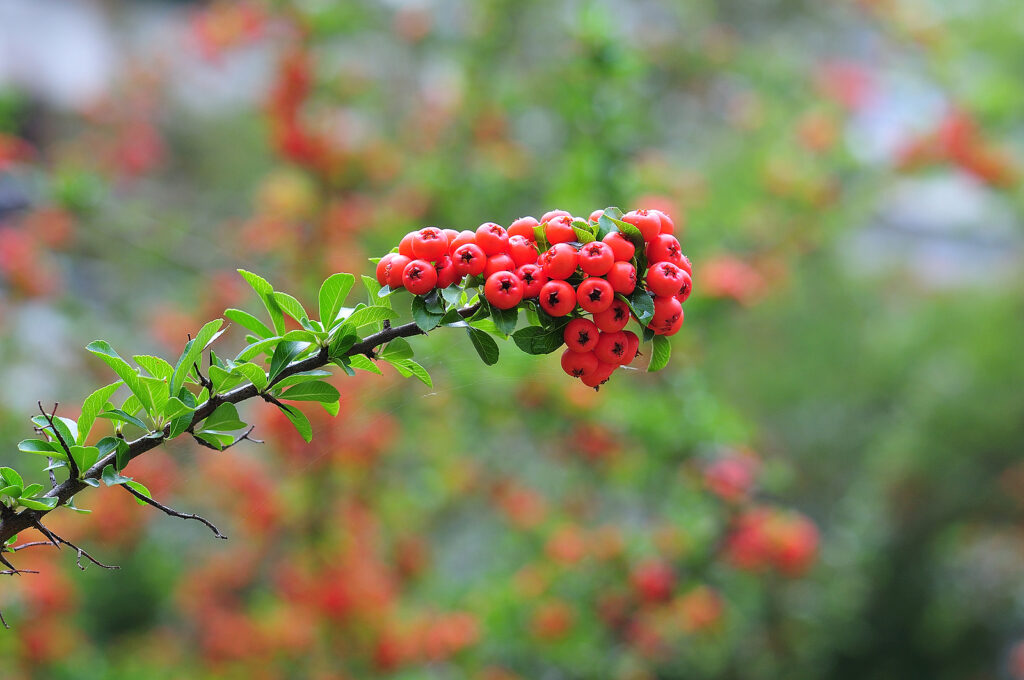
Pyracantha pests and diseases
- Pyracantha can be attacked by aphids, spider mites, and scale insects.
- Fireblight and scab are two diseases that can attack pyracantha. Pyracantha is a member of the rose family and is susceptible to the fungal disease fireblight. Avoid standing water on the foliage which can leave the plant susceptible to fireblight. Fireblight can kill the plant. Scab can cause defoliation and turn fruit sooty.
- Choose disease-resistant varieties for best success growing pyracantha. Resistant cultivars include ‘Apache’, ‘Fiery Cascade’, and ‘Goldrush.’
Pyracantha propagation
- Propagate pyracantha from cold-stratified seeds or semi-ripe cuttings.
- Take cuttings in summer. Root 6 inch (15cm) cutting in spring.
- Sow seed in fall or late winter.
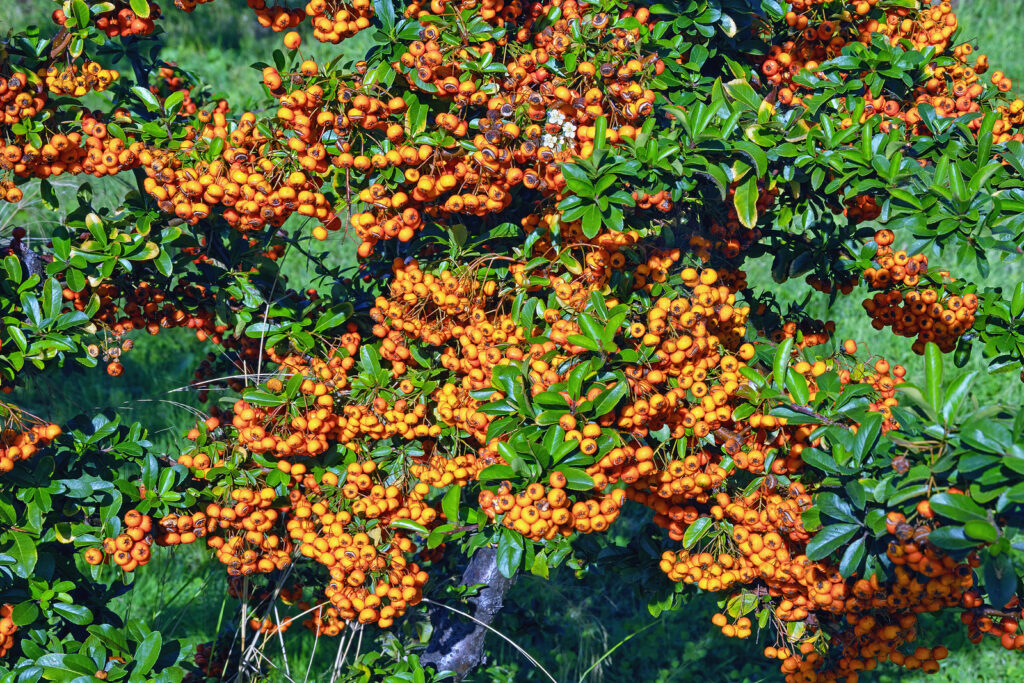
Pyracantha varieties to grow
- Pyracantha angustifolia is the most cold-resistant firethorn; it can tolerate winter in Zone 4.
- P. coccinea, scarlet firethorn, is hardy to -10°F (-23°C); it is an upright plant to about 10 feet (3m) tall; looked for named cultivars for certain characteristics: ‘Aurea’ has yellow fruit; ‘Fiery Cascade; is upright grower with orange berries; ‘Goldrush’ is densely branches with yellow-orange berries; ‘Lalandei’ is somewhat hardier than the species–it is an upright grower to 12 feet (3.6m) with orange-red fruit; it is very popular; ‘Mohave’ produces upright growth and orange-red fruit–it is resistant to fireblight and scab.
- P. fortuneana (P. crenatoserrata) can reach 15 feet tall (4.5m); it bears coral to orange fruits throughout winter; ‘Graberi’ has dark red fruits and grows to 15 feet; ‘Cherri Berri’ has deep red fruit and grows to 10 feet (3m).
- P. koidzumii, Formosa firethorn, is a species from Taiwan; cultivar ‘Victory’ has dark red berries and grows to 10 feet (3m); ‘Santa Cruz’ is low growing with spreading stems to about 3 feet (.9m) tall; ‘Teton’ grow to 12 feet (3.6m) with yellow-orange berries and is fireblight resistant.
- P. x ‘Watereri’ is rounded to 8 feet (2.4m) tall and yield bright red berries.


